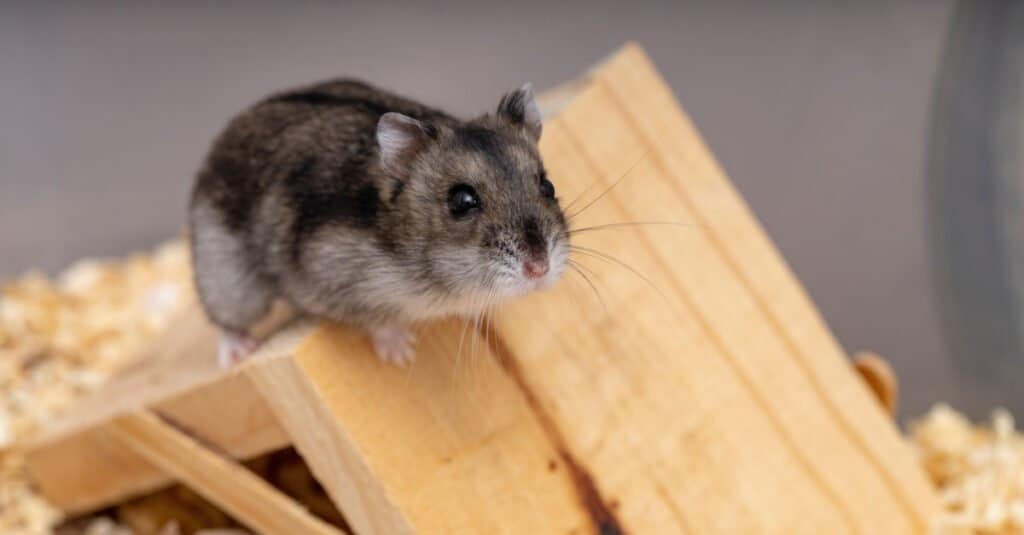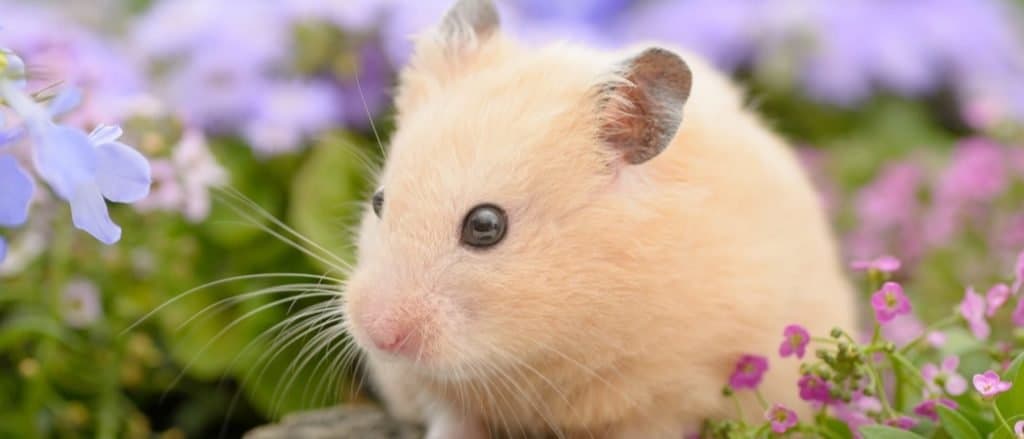Dwarf and Syrian hamsters are popular pets for every lifestyle, adjusting quickly to both apartment life and acting as a classroom pet. However, they have different needs and selecting the right little furry friend hinges on picking the right kind of hamster for you.
Dwarf and Syrian hamsters are different in quite a few ways! The two have key physical differences, as well as differences in temperament and behavior. Let’s explore them below.
Key Differences between a Dwarf and a Syrian Hamster

The major difference between a Dwarf hamster and a Syrian hamster is size, and the Syrian is significantly larger. Other key differences include their appearance and behavior.
Apart from the fact that they are both hamsters, spotting the differences between the two breeds is relatively easy. Both can have long or short-haired coats, which come in various colorations and markings.
Dwarf Vs Syrian Hamsters: Size

Dwarf hamsters are much smaller than Syrian hamsters.
©Vinicius R. Souza/Shutterstock.com
On average, Dwarf hamsters, between 2-4 inches in length, are pretty small. The Roborovski Dwarf is only 1.5 inches long on average, while the Chinese Dwarf can grow up to 4 inches long. Dwarf hamsters are tiny, agile, and extremely quick. Dwarf hamsters generally live between 2-3 years.
Syrian hamsters are between 5-7 inches in length, significantly larger than Dwarf hamsters. They have expandable cheek pouches which extend from their cheeks to shoulders. They usually live between 1-3 years.
Dwarf vs Syrian Hamsters: Appearance
Dwarf hamsters are classified into subspecies, and their coat coloring largely depends on their species. Winter white Dwarfs are grey and white or brown and white, depending on the season. Campbells have noticeably smaller ears and are grey and brown. Grey Dwarfs have a similar appearance to mice and can be grey, grey-brown, or sandy grey. Chinese Dwarf hamsters are larger than other Dwarfs and have white bellies, grey-brown fur, and a dark stripe down their backs. Roborovski Dwarfs look quite like Chinese Dwarfs but also have white spots above the eyes.
The Syrian hamster is also referred to as the Golden or Teddy Bear hamster. Typically, it is golden-brown, but there are many variations in pattern. The coat can be banded, primarily white, or even the rare tortoiseshell pattern. This breed can come in over 27 different colors.
Dwarf vs Syrian Hamsters: Temperament And Behavior

The Syrian hamster is much more open to handling than the Dwarf hamster.
©stock_shot/Shutterstock.com
When selecting a hamster, it is important to take the temperament and expected behavior of the breed into account. Each species of hamster has its personality, and some are more adaptable to human handling than others. Personality can make or break a relationship with any pet, and hamsters are no different!
Dwarf hamsters are much less social than Syrians; Dwarf breeds are generally not a fan of being handled and will flee attempts to pick them up. With careful and patient handling, they can learn to accept being held. They are great for individuals that prefer to observe them rather than handle them constantly. They are content with owners who are frequently absent and function well independently.
Syrian hamsters are much more engaging and friendly, more likely to accept being handled. Syrians are quite intelligent and, with patience, can even be taught tricks. They are very curious, active, and generally open to interacting with humans. However, they are solitary animals and do not like or want to share an enclosure. They are highly territorial and should be kept in their enclosure.
The Syrian is suitable for families with children or individuals that want a hamster that is affectionate and open to handling.
About Owning More Than One Hamster

Some species of Dwarf hamsters can coexist happily with others of the same type.
©iStock.com/hikaru1222
Like many other rodent species, knowing whether more than one hamster can live together can be challenging. In the case of the Syrian hamster, the answer is always no. Syrian hamsters will fight to the death over territory and should only be in the same enclosure for mating purposes and separated immediately. However, many breeds of Dwarf hamsters can coexist happily. In the case of Dwarf hamsters, prospective owners must proceed with caution. Some Dwarf hamster breeds are as aggressive as Syrians.
Additionally, it is important to remember that hamsters of the opposite sex should only be placed together for mating. Hamsters reproduce quickly, and even breeders must be on high alert to separate them quickly. Female hamsters are generally more aggressive and can cause real harm to the male after mating. It is also vital to separate the female from their young as soon as possible. Once weaning begins, female hamsters will often eat their young and need to be watched carefully.
The photo featured at the top of this post is © Mary Swift/Shutterstock.com
Thank you for reading! Have some feedback for us? Contact the AZ Animals editorial team.






